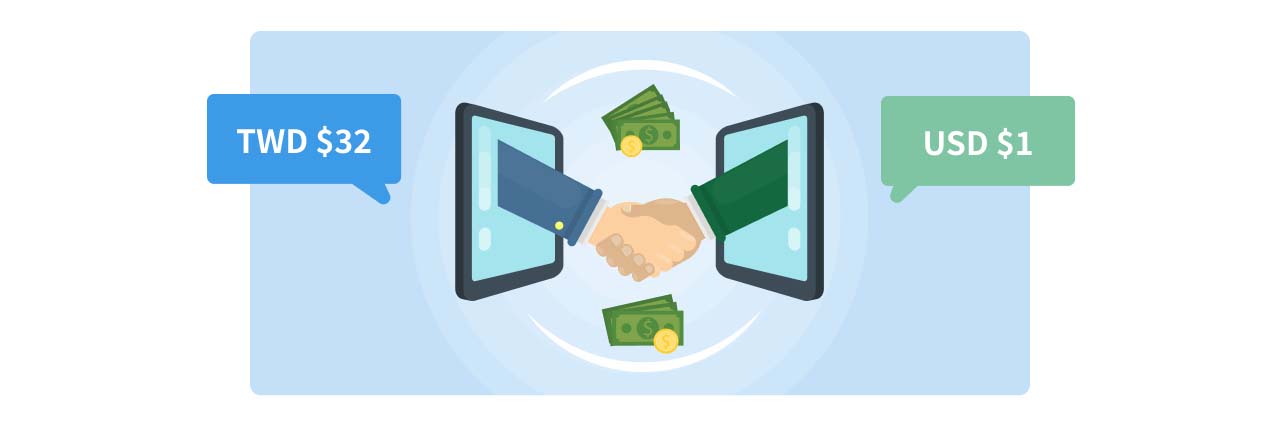What is Foreign Exchange
Foreign exchange, or forex, refers to foreign currencies. If we consider foreign currencies as commodities and trade them at an agreed price (exchange rate) using domestic currency, that is forex trading. In the forex market, we can also conduct exchange rate swaps between two different currencies, making forex trading more flexible. In order to understand the forex market, we would start by introducing the exchange rate.
What is an Exchange Rate

Exchange rates consist of two different currencies. It is commonly written as USD/TWD, meaning that how many Taiwanese dollars can one US dollar exchange for. For example, if the USD/TWD exchange rate is 32, it means that one US dollar can exchange for 32 Taiwanese dollars. Therefore, when the exchange rate rises, for people holding Taiwanese dollars, it means that they would need more Taiwanese dollars to exchange for one US dollar, indicating a devaluation of the Taiwanese dollar. In the contrary, for people holding US dollars, each unit of US dollar can exchange for more Taiwanese dollars, indicating an appreciation of the US dollar.
| Base Currency | Quote Currency | |
|---|---|---|
| Base Currency / Quote Currency Exchange Rate Rises | Appreciates | Depreciates |
| Base Currency / Quote Currency Exchange Rate Falls | Depreciates | Appreciates |
Bank Exchange Rates
In Taiwan, it usually involves two kinds of exchange rate: cash rate and spot rate. These two rates differ slightly.
Cash Rate
The cash rate refers to the exchange rate the bank is willing to trade at when the forex transaction involves cash. Taking USD/TWD exchange rate in Taiwan as a sample, when Bank A announces a cash buying rate of 31.57 and a selling rate of 32.23, it means that you would get 31.57 Taiwanese dollars if you provide US1 dollar in cash, and you would need to pay 32.23 Taiwanese dollars in cash to get 1 US dollar. The difference between the buying and selling rates is the bank’s profit margin.
Spot Rate
The spot rate refers to the exchange rate the bank is willing to trade at when the transaction only involves accounts but not cash. Generally, the spot rate announced by the bank will be more favorable than the cash rate. If you need to purchase US dollar-denominated products (such as a US dollar-denominated fund), you would be able to buy US dollars using the spot rate.
There are many types of forex transactions, but we primarily focuses on spot forex transactions in this article. However, as previously mentioned, forex can also be traded through futures, options, or swap contracts.
For those interested, you can also refer to our articles:
